BLACKEAGLE
SENIOR MEMBER
A rare look inside the enormous ‘Qasr Al Hukm’ in Saudi Arabia
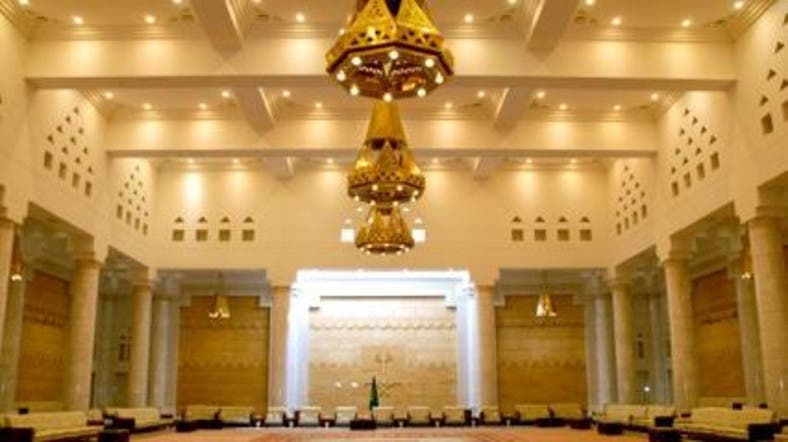
After King Abdulaziz captured Riyadh in 1901, he built the palace on the site where his forefathers had ruled. (Photo courtesy: qasralhukm.com)
By Miles Lawrence | Special to Al Arabiya News
Thursday, 15 October 2015
After King Abdulaziz captured Riyadh in 1901, he built a palace on the site where his forefathers had ruled. For more than 30 years this was his home and his headquarters, where he ran his military and political campaigns to conquer and unify the Arabian Peninsula. It remained the seat of national government until his death in 1953.
This September, for the first time, the royal family opened the palace to the public, with a free exhibition celebrating the unusual coincidence of the Saudi National Day and Eid al Adha, the Islamic holiday marking the end of the hajj pilgrimage.
The palace is enormous, covering 11,500 square meters. When it was built, it was the largest structure in Riyadh, which was no more than a provincial town of adobe buildings surrounded by a wall.
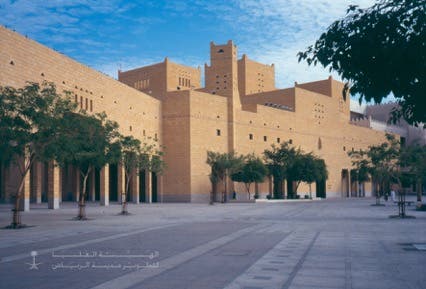
(Photo courtesy: qasralhukm.com)
Rebuilt three times in the past century, most recently during a 1980s project overseen by the current king during his time as governor, it is now home to the capital’s municipal government.
Qasr Al Hukm has been the seat of government since the Second Saudi State in the mid-19th century. The name means ‘Justice Palace’, and traditionally, justice was delivered in the main square here, by an executioner with a sharp sword.
But the exhibition has focused on less bloody subjects, and is full of curious visitors. “We didn’t expect the numbers to be so high,” said Khalid al-Hazani, the organiser. “Usually during eid, everyone is busy with their families.”
“The idea came from my employer, the Arriyadh Development Authority, and we took it to the governor,” he said. “Prince Bandar supported the idea and agreed to open the building for three days for public education.”
Take a virtual tour here
On the opening day of the exhibition, visitors entered through the royal gate on the north side of the palace. The first courtyard was flanked with men in white thobes and red chequred shemaghs, wearing ceremonial daggers and dancing to welcome the governor.
Once inside, visitors padded softly through high-ceilinged corridors along thick red carpets, looking up and marveling at the elaborate chandeliers and marble columns. Water trickled through a winding moat, tracing its way to a prayer room.
The first feature on the tour was a gargantuan hall where royal guests are entertained at dinners and receptions. At 1,200 square meters, it is as big as three football pitches, and the ceilings are 14 meters high. Children were playing on the floor, many still wearing green face paint from the National Day celebrations.
Next stop was the coronation room, a smaller carpeted hall, which could easily go unnoticed if you weren’t told of its significance. The king’s office was also open, although it serves little purpose now that national government is conducted elsewhere.
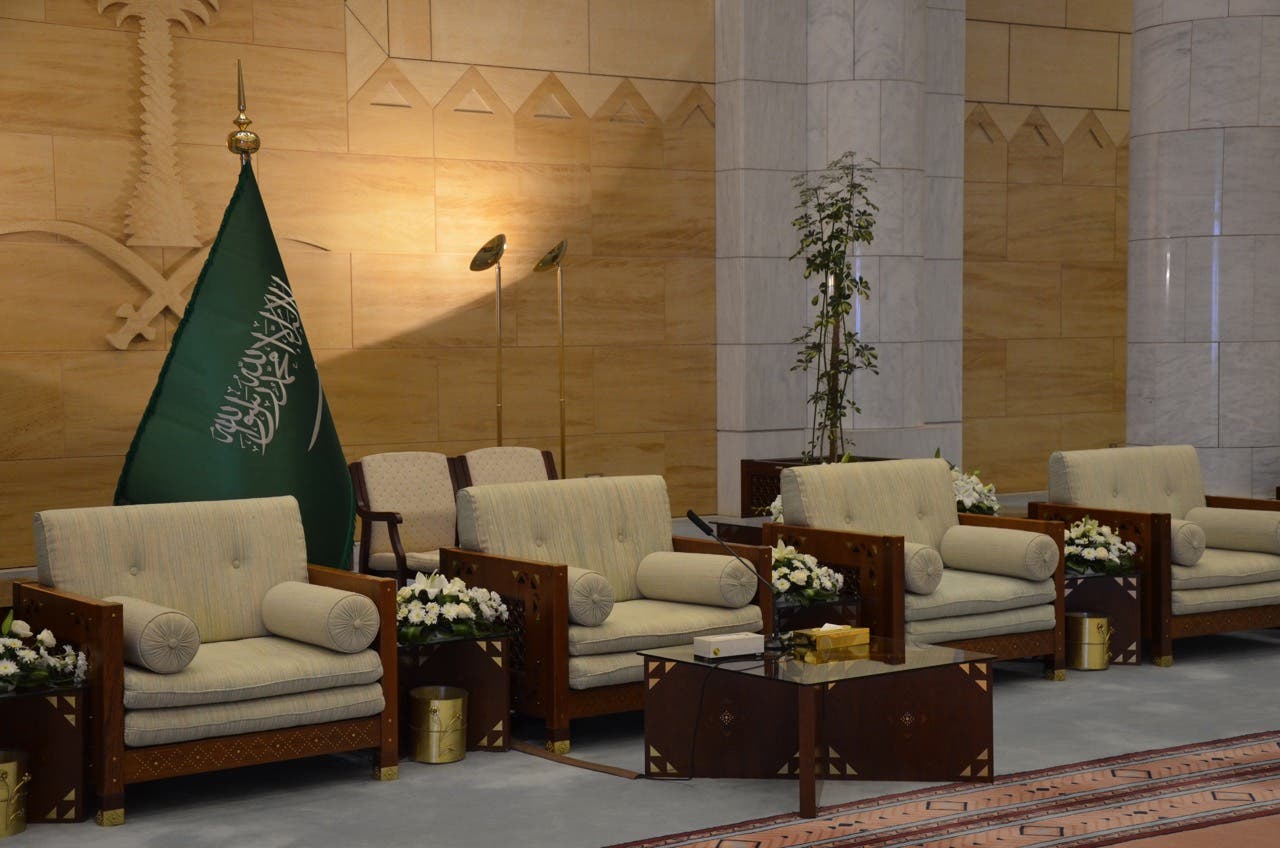
The coronation room. (Photo courtesy: Miles Lawrence)
The royal majlis next door to the office, is where King Abdulaziz held court, sitting around the edge of the room as per Bedouin custom and listening to the concerns of his subjects and advisors.
The tradition continues today, with the regional governors holding regular consultation sessions to resolve grievances. The governor’s office and majlis are on the first floor of the palace.
“The public consultation is open not just to Saudis but to anyone,” says Khalid al-Hazani. “If they have gone through the official channels with no result, they can deliver a letter to the governor in person, and he will reply after two or three days. No need to make an appointment.”
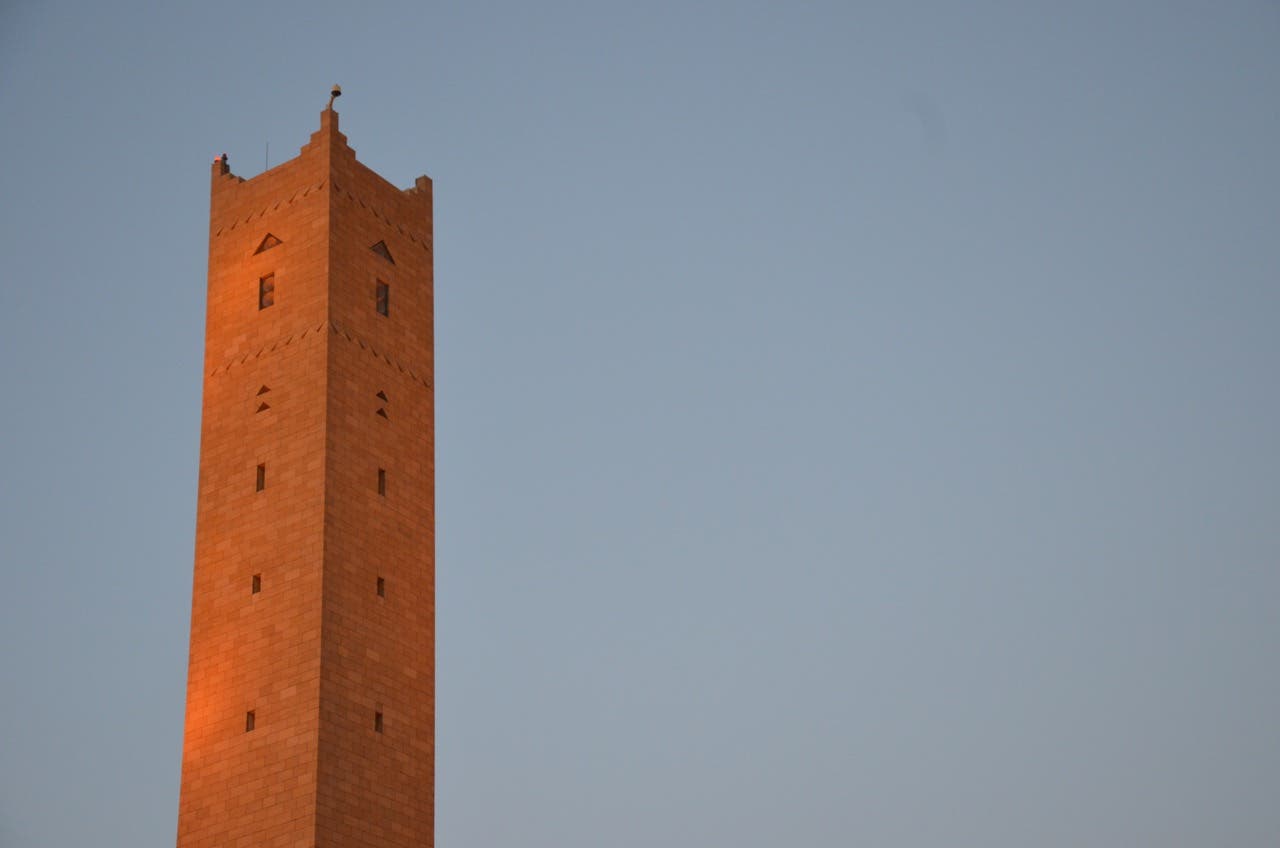
Minaret at the Grand Mosque. (Photo courtesy: Miles Lawrence)
Directly opposite the palace is the Imam Turki bin Abdullah Grand Mosque, which, at 17,000 capacity, is the largest in the capital.
There are two covered passageways between the palace and mosque. “The bridge was first built after the assassination of Imam bin Turki bin Abdullah Al-Saud in 1834," says Abdulrahman al-Ruwaishid, a Saudi historian who knew King Abdulaziz.
“When his father was killed, Imam Turki had the bridges constructed to allow him to walk to the mosque and pray without danger. When King Abdulaziz commissioned the reconstruction in 1909, he borrowed the idea.”
The bridges also “invoke the strong traditional links between the seat of government and the religion of Islam”, says a report from the Arriyadh Development Authority. This is a physical reminder of the alliance between the al Saud and the Al al-Sheikh, who have traditionally held many of the top religious posts in the country.
The bridge system also runs between the towers of the Qasr, allowing King Abdulaziz to travel to his father’s house, and between his four wives, one in each tower.
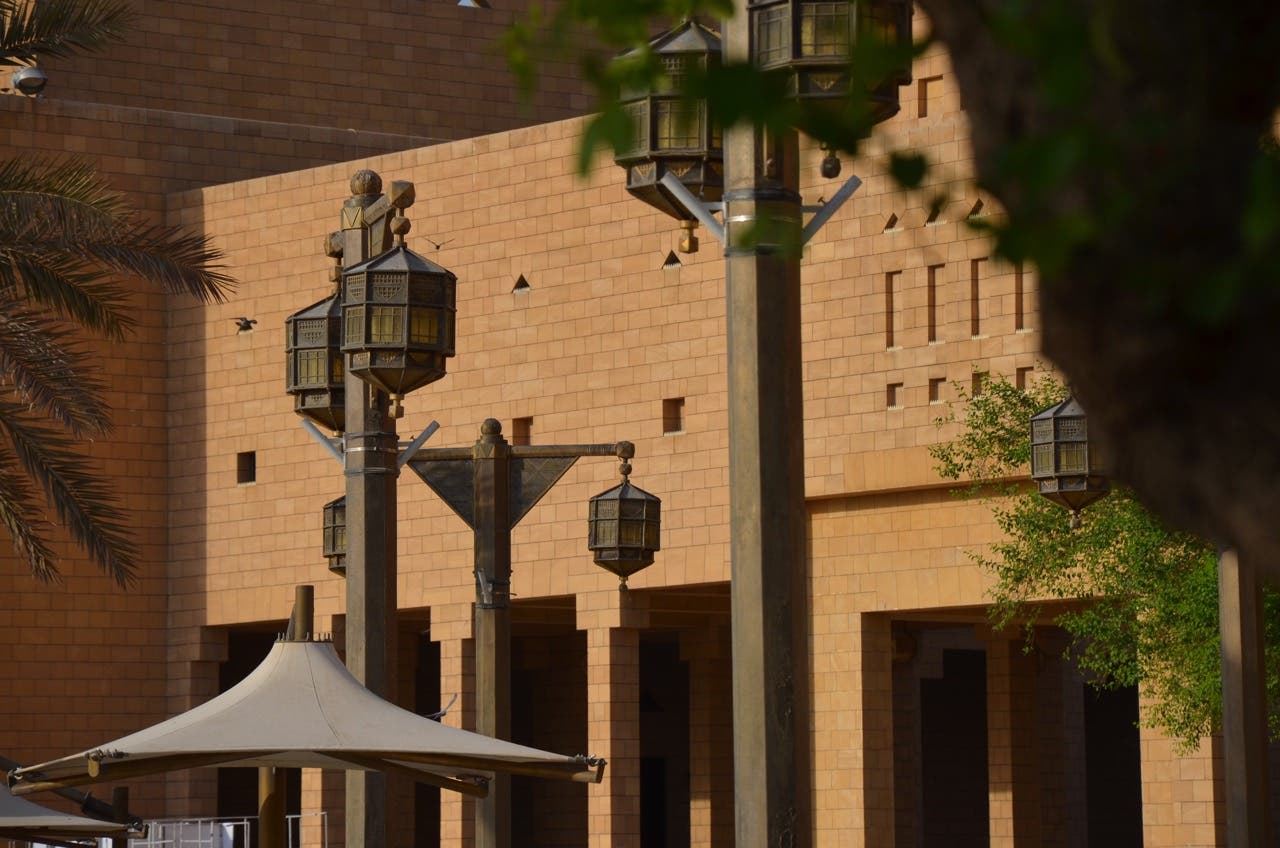
Private bridge between palace and grand mosque (Photo courtesy: Miles Lawrence)
“These bridges were important back then, because the public roads went straight through the Qasr,” says al-Ruwaishid. “They gave the king privacy and security.”
Ruwaishid was born in 1926, and grew up playing and studying with the princes and princesses at the Qasr Al Hukm.
His father was the Islamic studies tutor for the young royals, permitted to teach girls as well as boys because he was blind. “The girls liked his lessons, because they could remove their veils”, said Ruwaishid.
The events that stand out best in his memory are the graduation ceremonies which took place when a student finished reading the Quran.
Hundreds would gather in the square outside the palace. Drums would beaten and voices cry out in song, while crowds would dance the traditional Najdi ardha. Towering above the crowd, King Abdulaziz would join the dance and distribute monetary gifts to those gathered.
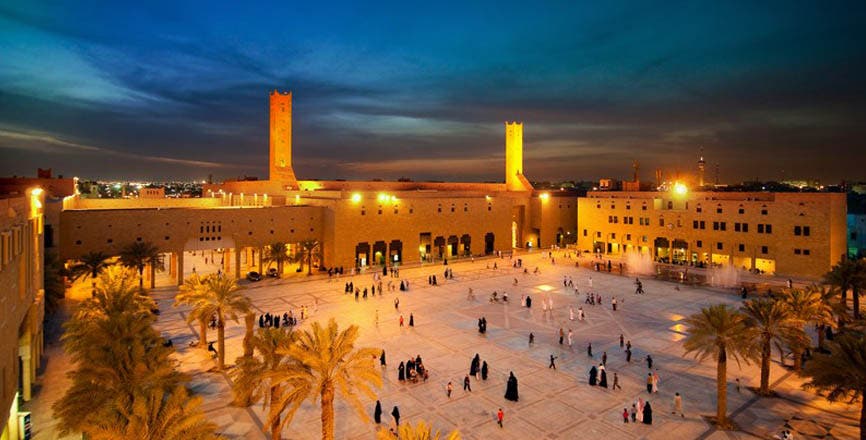
(Photo courtesy: qasralhukm.com)
“The king was a passionate man,” said Ruwaishid. “If he felt someone had been wronged, he might cry, or become very angry.”
“He was also a great leader. The Bedouin thought he had some form of magic, because of his military and political achievements. They didn’t understand the concept of politics, of course.”
“The king surrounded himself with many advisors, from many different countries - Britain, France, Syria, and so on. He would listen to their advice, but he made his own decision.”
“One example is during the first world war. The British wanted to travel through some land near Jordan which was under King Abdulaziz’s control. His advisors all told him to refuse the British, but he knew that if he refused, they would go anyway. So he gave them permission, and then they owed him a favor. He was very clever like that.”
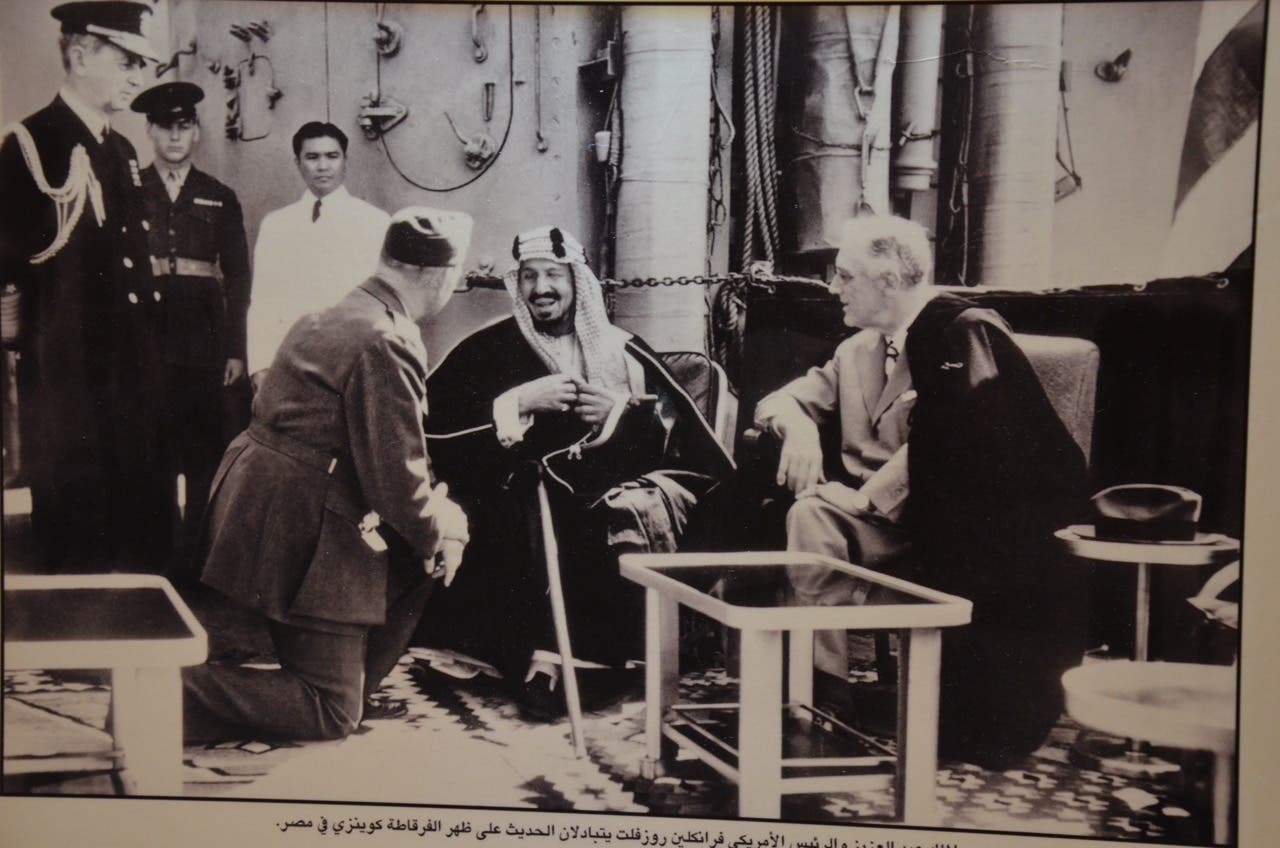
The historic Bitter Lake meeting between King Abdulaziz and Franklin D. Roosevelt. (Photo courtesy: Miles Lawrence)
During the 1930s, the king built a new palace north of the city walls. It was so big, some travelers mistook it for the capital itself. The palace has now been partly converted into the King Abdulaziz Historical Center, which is also worth a visit.
The area around the Qasr Al Hukm makes for an interesting day out - at the Masmak citadel museum or the Souk al-Zal you can catch a glimpse of an old Riyadh which is fast disappearing among the skyscrapers. But apart from the governor’s public majlis, the palace doors are shut once more. It was a rare privilege to see behind them.
Last Update: Friday, 16 October 2015 KSA 13:13 - GMT 10:13
http://english.alarabiya.net/en/life-style/art-and-culture/2015/10/15/A-rare-look-inside-the-enormous-Palace-of-Justice-in-Saudi-Arabia-.html

After King Abdulaziz captured Riyadh in 1901, he built the palace on the site where his forefathers had ruled. (Photo courtesy: qasralhukm.com)
By Miles Lawrence | Special to Al Arabiya News
Thursday, 15 October 2015
After King Abdulaziz captured Riyadh in 1901, he built a palace on the site where his forefathers had ruled. For more than 30 years this was his home and his headquarters, where he ran his military and political campaigns to conquer and unify the Arabian Peninsula. It remained the seat of national government until his death in 1953.
This September, for the first time, the royal family opened the palace to the public, with a free exhibition celebrating the unusual coincidence of the Saudi National Day and Eid al Adha, the Islamic holiday marking the end of the hajj pilgrimage.
The palace is enormous, covering 11,500 square meters. When it was built, it was the largest structure in Riyadh, which was no more than a provincial town of adobe buildings surrounded by a wall.

(Photo courtesy: qasralhukm.com)
Rebuilt three times in the past century, most recently during a 1980s project overseen by the current king during his time as governor, it is now home to the capital’s municipal government.
Qasr Al Hukm has been the seat of government since the Second Saudi State in the mid-19th century. The name means ‘Justice Palace’, and traditionally, justice was delivered in the main square here, by an executioner with a sharp sword.
But the exhibition has focused on less bloody subjects, and is full of curious visitors. “We didn’t expect the numbers to be so high,” said Khalid al-Hazani, the organiser. “Usually during eid, everyone is busy with their families.”
“The idea came from my employer, the Arriyadh Development Authority, and we took it to the governor,” he said. “Prince Bandar supported the idea and agreed to open the building for three days for public education.”
Take a virtual tour here
On the opening day of the exhibition, visitors entered through the royal gate on the north side of the palace. The first courtyard was flanked with men in white thobes and red chequred shemaghs, wearing ceremonial daggers and dancing to welcome the governor.
Once inside, visitors padded softly through high-ceilinged corridors along thick red carpets, looking up and marveling at the elaborate chandeliers and marble columns. Water trickled through a winding moat, tracing its way to a prayer room.
The first feature on the tour was a gargantuan hall where royal guests are entertained at dinners and receptions. At 1,200 square meters, it is as big as three football pitches, and the ceilings are 14 meters high. Children were playing on the floor, many still wearing green face paint from the National Day celebrations.
Next stop was the coronation room, a smaller carpeted hall, which could easily go unnoticed if you weren’t told of its significance. The king’s office was also open, although it serves little purpose now that national government is conducted elsewhere.

The coronation room. (Photo courtesy: Miles Lawrence)
The royal majlis next door to the office, is where King Abdulaziz held court, sitting around the edge of the room as per Bedouin custom and listening to the concerns of his subjects and advisors.
The tradition continues today, with the regional governors holding regular consultation sessions to resolve grievances. The governor’s office and majlis are on the first floor of the palace.
“The public consultation is open not just to Saudis but to anyone,” says Khalid al-Hazani. “If they have gone through the official channels with no result, they can deliver a letter to the governor in person, and he will reply after two or three days. No need to make an appointment.”

Minaret at the Grand Mosque. (Photo courtesy: Miles Lawrence)
Directly opposite the palace is the Imam Turki bin Abdullah Grand Mosque, which, at 17,000 capacity, is the largest in the capital.
There are two covered passageways between the palace and mosque. “The bridge was first built after the assassination of Imam bin Turki bin Abdullah Al-Saud in 1834," says Abdulrahman al-Ruwaishid, a Saudi historian who knew King Abdulaziz.
“When his father was killed, Imam Turki had the bridges constructed to allow him to walk to the mosque and pray without danger. When King Abdulaziz commissioned the reconstruction in 1909, he borrowed the idea.”
The bridges also “invoke the strong traditional links between the seat of government and the religion of Islam”, says a report from the Arriyadh Development Authority. This is a physical reminder of the alliance between the al Saud and the Al al-Sheikh, who have traditionally held many of the top religious posts in the country.
The bridge system also runs between the towers of the Qasr, allowing King Abdulaziz to travel to his father’s house, and between his four wives, one in each tower.

Private bridge between palace and grand mosque (Photo courtesy: Miles Lawrence)
“These bridges were important back then, because the public roads went straight through the Qasr,” says al-Ruwaishid. “They gave the king privacy and security.”
Ruwaishid was born in 1926, and grew up playing and studying with the princes and princesses at the Qasr Al Hukm.
His father was the Islamic studies tutor for the young royals, permitted to teach girls as well as boys because he was blind. “The girls liked his lessons, because they could remove their veils”, said Ruwaishid.
The events that stand out best in his memory are the graduation ceremonies which took place when a student finished reading the Quran.
Hundreds would gather in the square outside the palace. Drums would beaten and voices cry out in song, while crowds would dance the traditional Najdi ardha. Towering above the crowd, King Abdulaziz would join the dance and distribute monetary gifts to those gathered.

(Photo courtesy: qasralhukm.com)
“The king was a passionate man,” said Ruwaishid. “If he felt someone had been wronged, he might cry, or become very angry.”
“He was also a great leader. The Bedouin thought he had some form of magic, because of his military and political achievements. They didn’t understand the concept of politics, of course.”
“The king surrounded himself with many advisors, from many different countries - Britain, France, Syria, and so on. He would listen to their advice, but he made his own decision.”
“One example is during the first world war. The British wanted to travel through some land near Jordan which was under King Abdulaziz’s control. His advisors all told him to refuse the British, but he knew that if he refused, they would go anyway. So he gave them permission, and then they owed him a favor. He was very clever like that.”

The historic Bitter Lake meeting between King Abdulaziz and Franklin D. Roosevelt. (Photo courtesy: Miles Lawrence)
During the 1930s, the king built a new palace north of the city walls. It was so big, some travelers mistook it for the capital itself. The palace has now been partly converted into the King Abdulaziz Historical Center, which is also worth a visit.
The area around the Qasr Al Hukm makes for an interesting day out - at the Masmak citadel museum or the Souk al-Zal you can catch a glimpse of an old Riyadh which is fast disappearing among the skyscrapers. But apart from the governor’s public majlis, the palace doors are shut once more. It was a rare privilege to see behind them.
Last Update: Friday, 16 October 2015 KSA 13:13 - GMT 10:13
http://english.alarabiya.net/en/life-style/art-and-culture/2015/10/15/A-rare-look-inside-the-enormous-Palace-of-Justice-in-Saudi-Arabia-.html
